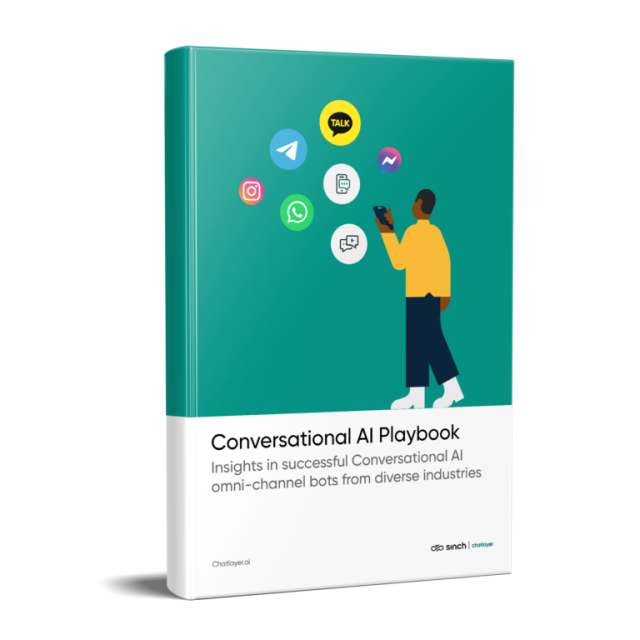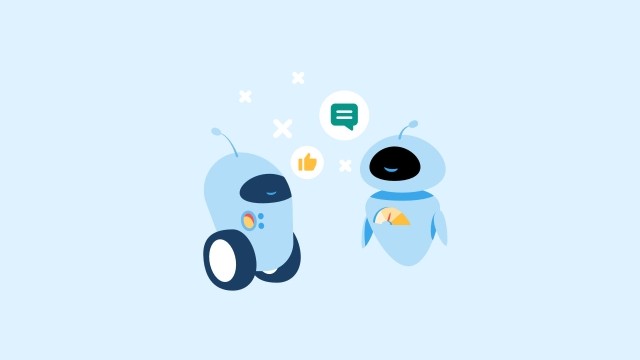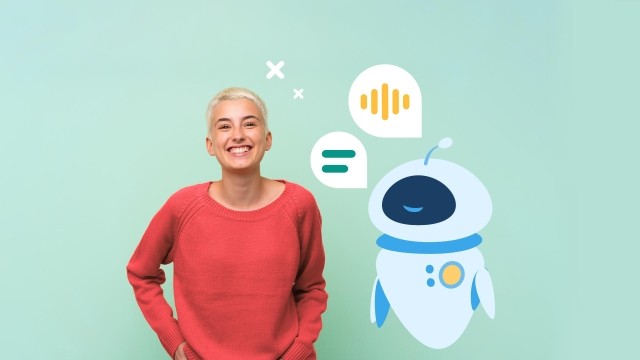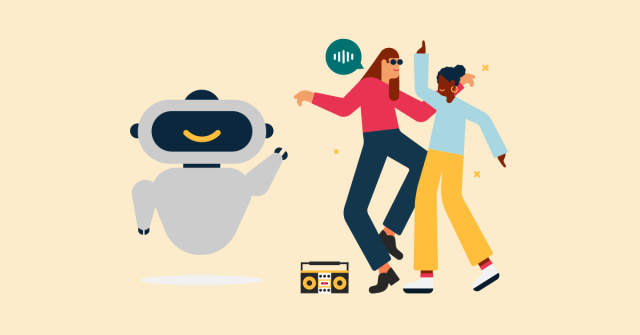In this article:
What’s a voice bot, and how is it different from a chatbot? In the following, we explore the difference between the two types of bots, and why knowing this is important for your business.
When it comes to technologies that can help grow a business, bots are currently the most sought-after service tools. According to a recent industry report, AI has become one of the most important technological developments in business.
And if you've watched the hype around language models, such as GPT and Bard recently, you know why!
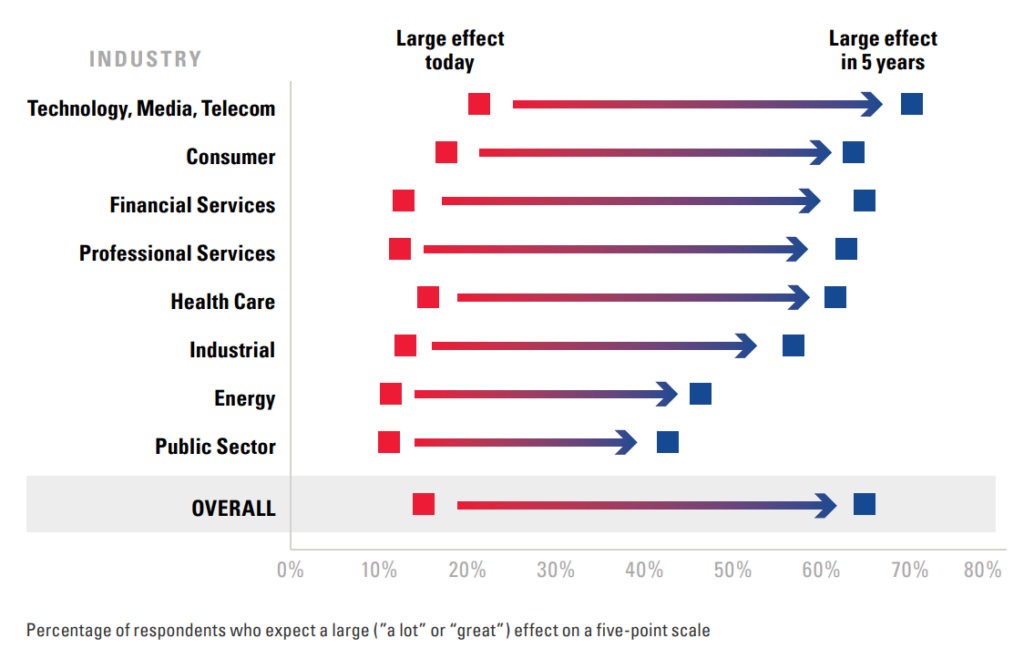
Outside of buzz topics like ChatGPT, bots are actually very useful for businesses. Bots are available 24/7, they can answer questions immediately, and they're able to handle substantial amounts of inquiries without ever getting tired. So, from improving customer service to reducing the workload for employees, there are many ways in which businesses can benefit from bots.
In fact, both voice bots and chatbots play a significant role in a company’s customer communication. However, it’s important to know that speech-based voice bots and text-based chatbots are not the same. Understanding the differences can make a crucial difference in how successful your bot will be.
What's a chatbot?
A chatbot is a software application used to conduct an on-line chat conversation via text or text-to-speech, in lieu of providing direct contact with a live human agent.
Wikipedia
Basically, a chatbot is a computer program or virtual assistant that makes it possible for humans to interact with technology. When the first bots were designed in the 1960s, there were only text-based bots, hence the name “chatbot”.
Since then, technology has evolved, and there are not only text-based bots, but also voice bots who are able to process human speech. Due to the original term though, text-based bots and voice bots are all simply called “chatbots”.
This can lead to some confusion because people tend to think that since they have the same name, voice bots and text-based bots are the same. And they're not — just like human written language and spoken language are not the same. So, when designing a bot for your business, it’s important to understand the difference to get the most out your bot.
What is a text-based bot?
As the name implies, text-based chatbots use written text to interact with humans.
This could be on a chat interface on a company’s website, in an app, or even in a messenger service, such as WhatsApp or Telegram.
These text-based chatbots are either very simple, rule-based bots or more complex AI-based bots.
Rule-based bots are pre-programmed to answer to specific keywords and give pre-written answers when a customer uses this keyword.
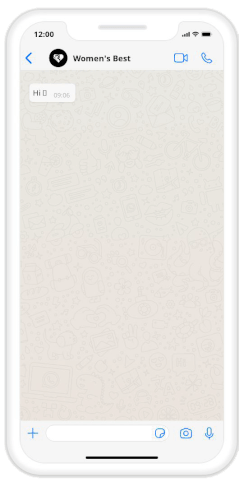
AI-based bots use natural language processing (NLP), machine learning, and conversational design to create a much smoother conversational flow with customers, and answer questions in a more natural way.

What's a voice bot?
A voice bot is an AI-based voice assistant that can process human speech. Usually, this works through a speech-to-text algorithm that can convert audio into text and vice versa in a few steps.
Let’s say a restaurant uses a voice bot to take food orders. If a customer calls, and places an order with the voice bot, using natural language processing and artificial intelligence, the bot will:
- “translate” what the customer said into text,
- come up with a text-based answer for itself, which is then
- converted from text to speech, which is the answer the customer will hear.
All of this only takes a few seconds, so for a caller, it's comparable to talking to a human agent.
In a business context, voice bots can be great for scheduling appointments over the phone, for guiding a customer through a shopping process, for answering questions — just to name a few examples.
Both, text-based bots and voice bots can be very helpful for businesses. They can:
- boost efficiency
- provide a better customer experience
- increase brand loyalty
- improve purchase conversions
Voice vs. text: Not all conversations are created equal
From a linguistics perspective, people use different styles of languages in different contexts. For instance, when somebody writes an e-mail to their bank, they use more formal expressions. In a text message, on the other hand, people use shorter phrases due to space constraints. When talking on a messenger app, people use yet a different tone. These chat apps are more informal, and users tend to use more emojis, so it’s a more conversational style of writing.
In spoken language, the differences are even greater. The sentence structure could be completely different, and there are sound elements that matter in spoken communication, such as pitch, volume, and even pauses.
This makes it tricky for companies to simply take a text-based bot, and turn it into a voice bot, without any adjustments.
Because humans interact differently when they write or speak, the user experience will most likely be extremely awkward if you don’t make any changes to the chatbot’s conversational style and design when turning a text-based bot into a voice bot or vice versa.
Therefore, make sure to be aware of the following factors and adjust your bot design accordingly. This will ensure the best user experience, and yield the best results for your business.
Processing information
As mentioned, spoken language and written language can be very different. This doesn’t only refer to the tone, but also to the way humans process language. Humans can process more information faster when it’s written.
When they just listen to information though, this becomes harder for the brain to process, so the sentences of a voice bot need to be shorter, the language simpler, and important information should be repeated to make sure the customer is able to understand it. It's also important to include pauses to make sure the customer has enough time to process the information.
Understanding the customer's intent
As humans might have a less straight-forward way of saying what they want when they talk than when they write, the voice bot needs to have very strong NLP capabilities for understanding intents. NLP also helps to filter out mistakes that the speech-to-text engine might have made, which will greatly improve the quality of the human-bot-interaction.
Without these capabilities, it would take a lot of back and forth between bot and customer to understand the customer’s needs, which, in turn, results in a bad user experience.
In order to provide a customer with a fast and efficient service, it's also recommended for the bot to offer the caller a few clear choices, like: “Would you like to order food, check your delivery status, or talk to an agent?” That way, the answers the customer will give, are more focused, which will make it easier for the bot to recognize their intent and help the customer faster.
With a text-based bot, on the other hand, where it’s easier for the bot to recognize intent, you could design a more free-form style conversation.
Clues
When talking to bots, customers have very little clues as to what is going on the other end. So, designers need to think about ways to communicate what the bot is doing. However, this could be very different for text-based bots and voice bots.
For instance, in a chat, a bot might signal that it's looking for information by either sending a brief message or showing the typing dots.
In a conversation over the phone, the bot will have to let the customer know in different ways what is going on. The voice bot could, for example, say something like: “Just a second, I'm looking for your information.”, and then it’s also possible to include typing sounds or music to indicate to the customer that there'll be a waiting period while they can hear the background sound.
Personality
With a text-based bot, a bot usually expresses its personality in a visual-forward way, either by capitalizing certain words, using emojis or GIFs, or even by showing images or graphics.
A voice bot’s personality, of course, has to be expressed differently. This can be done by pitch or intonation, dialect, or choice of words.
Overall, if you pay attention to these details when designing a voice bot or a chatbot, a bot can really boost your business.
How businesses use chatbots successfully
Chatbots can have a huge impact on your business. Chatbots can help save time, reduce costs, and increase sales. According to recent data from companies, chatbots can:
- Reduce costs by 30%
- Free up to 40 hours a month for your employees.
- Increase sales by 67%
Voice bot or chatbot: What's best for my business?
There's no one-size-fits-all chatbot solution for companies. Whether it’s better to use a text-based bot or a voice bot depends on a lot of factors, such as your type of business, the tasks your bot is supposed to complete, or your clients.
If you are trying to answer thousands of incoming inquiries per day, and help customers as fast as possible, a text-based bot might be more suitable for your business.
If the goal of your chatbot is to provide a more personalized user experience, and drive engagement, a voice bot might be the best choice.
Voice bot or chatbot? Sinch Chatlayer is the perfect solution for both!
The good news is that with Chatlayer’s conversational AI technology, you can design both, text-based bots or voice bots, in just a few steps. And you don’t need to be an IT expert either!
With our conversational AI bot you can:
- set up your chatbot in just a few minutes, no coding skills needed
- take advantage of our global network of experts to help you get started
- attend customers in 125 different languages
- use it on virtually any channel you like, from your website, to your app, to almost any messenger app
- manage all of your conversations on one platform

